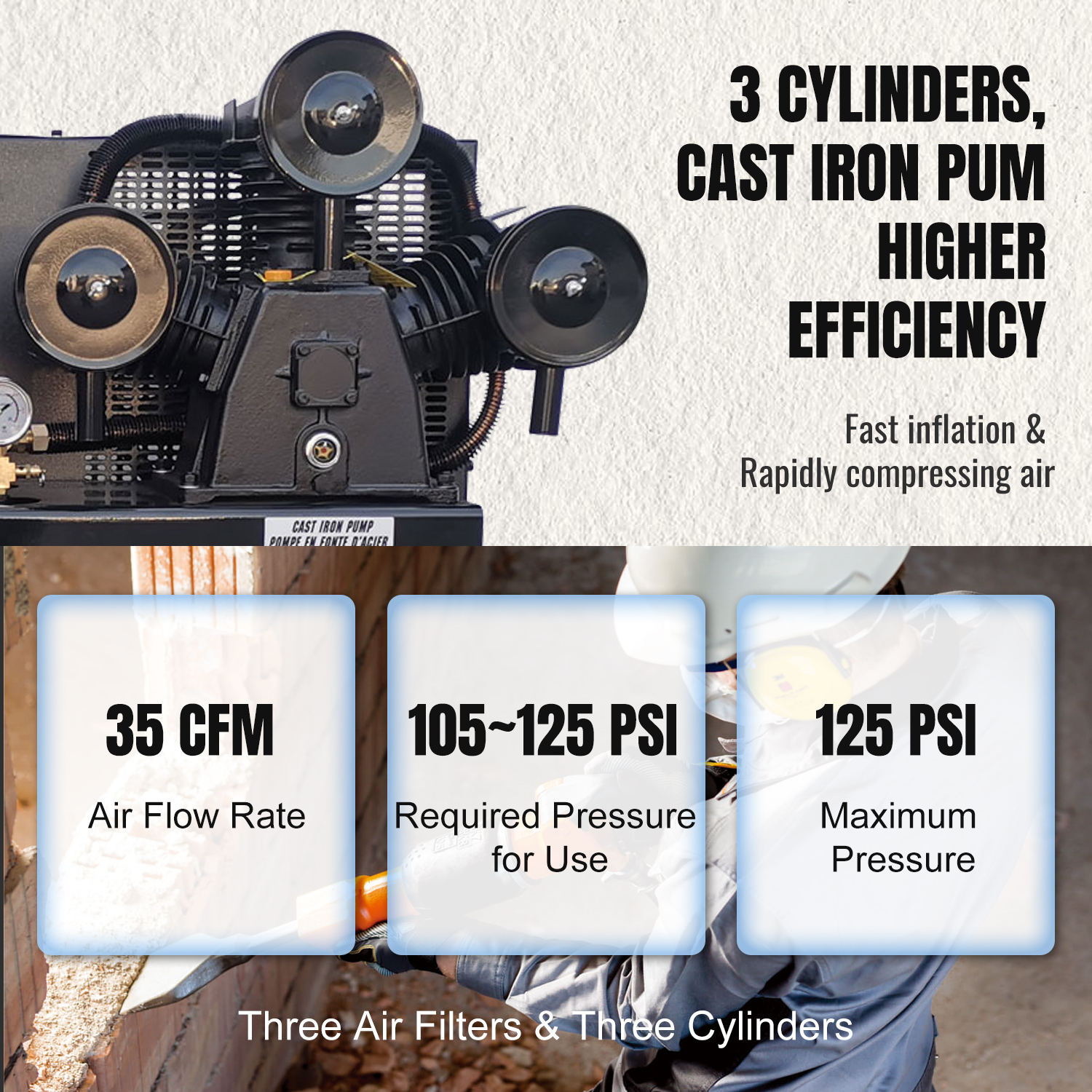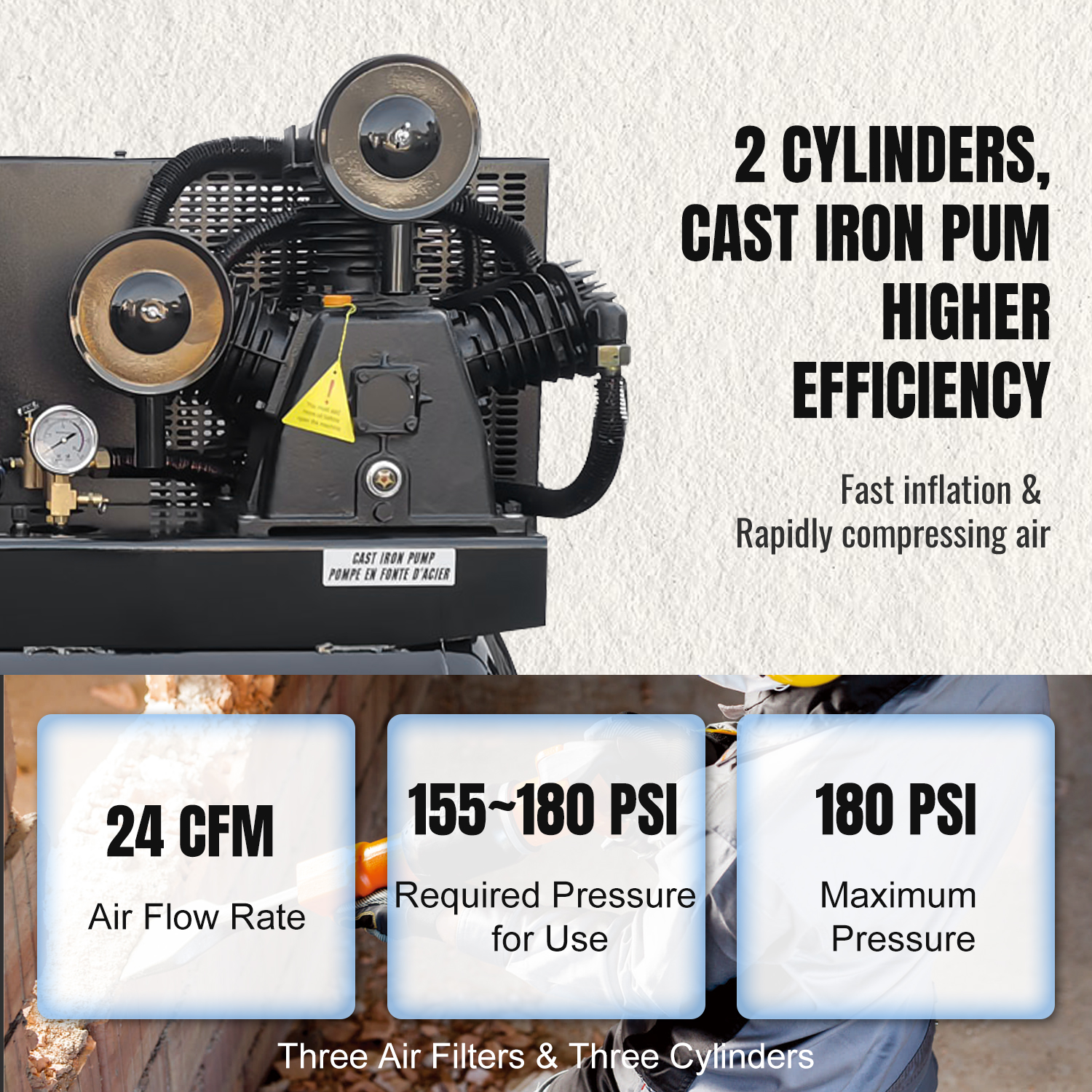In the dynamic landscape of US manufacturing, selecting the right compressor is critical to ensuring operational efficiency, safety, and cost-effectiveness. The choice between low-pressure and high-pressure compressors hinges on understanding their distinct capabilities and how they align with specific manufacturing needs.
HPDMC offers a comprehensive range of both types, designed to meet the diverse requirements of American industries. This guide breaks down the key differences, application scenarios, and selection criteria to help businesses make informed decisions.
Defining Pressure Classes: Where to Draw the Line
Low-Pressure Compressors
Typically operating below 100 PSI, low-pressure compressors are engineered for applications that require moderate air pressure for intermittent use. Common in small-scale manufacturing, woodworking, and automotive repair, these units prioritize energy efficiency and ease of maintenance. For example, HPDMC’s Piston Air Compressor With Vertical Type Air Tank delivers up to 44 CFM at 125 PSI, balancing performance for tasks like pneumatic tool operation or paint spraying.

High-Pressure Compressors
Operating above 100 PSI (often reaching 175 PSI or higher), high-pressure compressors are built for demanding industrial applications. These systems excel in continuous heavy-duty use, such as in CNG refueling stations, deep-sea diving equipment testing, or aerospace component manufacturing. HPDMC’s Gasoline Power Piston Air Compressor 13HP exemplifies this category, featuring cast iron cylinders and intercoolers for sustained high-pressure performance.

Application Scenarios: Matching Compressors to Manufacturing Needs
When Low-Pressure Works Best
- Light Industrial Tasks: In assembly lines for electronics or consumer goods, low-pressure compressors power small pneumatic actuators and conveyors. For instance, a 3HP low-pressure unit from HPDMC can efficiently operate robotic arms in a smartphone component factory without overpressurizing delicate systems.
- Construction & Mobile Services: Portable low-pressure models are ideal for on-site tasks like nail gunning, tire inflation, or concrete vibrators. The vertical tank design of HPDMC’s piston compressors ensures mobility while maintaining 125 PSI for consistent tool performance.
High-Pressure Applications in Manufacturing
- Testing & Calibration: Aerospace manufacturers use high-pressure compressors to test aircraft component durability under extreme conditions. HPDMC’s high-pressure systems, with precision-engineered intercoolers, can simulate pressures up to 200 PSI for rigorous quality assurance.
- Energy & Utilities: CNG refueling stations rely on high-pressure compressors to deliver natural gas at 3,600 PSI. HPDMC’s heavy-duty designs, like the 13HP gasoline-powered model, feature ASME-certified tanks for safety and compliance.
Performance Metrics: A Side-by-Side Comparison
| Feature | Low-Pressure Compressors (HPDMC) | High-Pressure Compressors (HPDMC) |
|---|---|---|
| Pressure Range | 80–125 PSI | 150–200 PSI (expandable to 3,000+ PSI) |
| Typical CFM Output | 15–50 CFM at 90 PSI | 30–100 CFM at 175 PSI |
| Energy Efficiency | IE3 motors for intermittent use | Variable speed drives for continuous load |
| Design Focus | Compact size, noise reduction | Heavy-duty materials, heat dissipation |
| Ideal Industries | Automotive, woodworking, light manufacturing | Aerospace, energy, heavy industrial |
| Key Models | Piston Air Compressor (3–10 HP) | Gasoline Power Piston (13 HP), Rotary Screw (5.5–15 HP) |
Cost Considerations for US Manufacturers
Initial Investment
- Low-Pressure: Entry-level models start at $699 (e.g., HPDMC’s 3HP piston compressor), making them accessible for small businesses.
- High-Pressure: Systems like the 13HP gasoline compressor begin at $2,000+, reflecting the complexity of heavy-duty components.
Operational & Maintenance Costs
- Low-Pressure: Simple designs mean lower maintenance—annual costs average $100–$200 for filter replacements and oil changes.
- High-Pressure: Require more frequent checks on intercoolers and seals, with annual maintenance costs around $500–$800. However, their energy efficiency in continuous use can offset costs by 15–20%.
HPDMC’s Solution: Tailored for US Manufacturing Demands
Low-Pressure Excellence
HPDMC’s low-pressure lineup, including the 5.5HP Rotary Screw Air Compressor, combines quiet operation (75 dB) with smart controls. The Advanced BASE Electronic Controller allows real-time pressure adjustment, ensuring optimal performance for tasks like automotive painting or small-scale packaging.
High-Pressure Reliability
For heavy-duty needs, the 13HP gasoline-powered compressor stands out with its cast iron pump and 30-gallon ASME tank. Designed for mobile services and construction, it delivers consistent pressure even in remote locations, a critical feature for US infrastructure projects.
A Selection Guide for US Manufacturers
1. Assess Air Demand:
Calculate required CFM at your target pressure using HPDMC’s online calculator. A woodworking shop may need 20 CFM at 90 PSI, while a metal foundry might require 60 CFM at 150 PSI.
2. Evaluate Duty Cycle:
Intermittent use (e.g., 20% on/off) suits low-pressure models, while 100% continuous operation demands high-pressure systems with heat management features.
3. Prioritize Compliance:
Ensure models meet OSHA standards (e.g., ASME tanks for high-pressure) and industry certifications (ISO 9001 for quality).
Future-Proof Your Operations with HPDMC
The right compressor choice can transform manufacturing efficiency. HPDMC’s range empowers US businesses to balance cost, performance, and sustainability. Whether outfitting a small workshop with a 3HP piston compressor or upgrading a factory with a high-pressure system, our solutions are engineered for American industry.
Explore HPDMC’s industrial compressor solutions to find the perfect fit for your manufacturing needs.
